The sprint retrospective is the most underestimated and under-utilized of all scrum ceremonies.
And I understand why that’s the case. Retrospecting requires you to be open and self-aware. It can be scary to do all that in front of your colleagues.
If you’re one such team, the below image should convince you to do more sprint retrospectives:
It shows where we end up if we look to improve by just 1% every day instead of when we regress by the same amount.
In this post I’ll share with you 5 sprint retrospective ideas with templates that you can use with your team today.
If you’re a small team that’s just getting started with scrum, you’re bound to see rapid improvements within your team.
However, if you’re a more mature team that’s been working together for a long time, you may not see rapid improvements. But it's important to not get disheartened by it.
As the above image shows, even a small improvement every day will go a long way in the long run.
Let’s jump in and look at the different templates and ideas you can use to run sprint retrospectives that helps your team to improve.
5 Sprint retrospective ideas
Idea 1: Car Brand
Use the car brand idea of running a sprint retrospective to relax your teammates. It’s one of the simplest, but effective way to identify problems within your team without making your team anxious or too serious. It helps your team to focus on the problem at hand instead of having them to point fingers at a specific person or their ideas.
How to run a Car Brand Retrospective
Gather your team in a conference call. Use a whiteboarding tool such as Miro to add post-it notes.
Ask your team to think back about the last sprint and how they felt about.
Now, get your team to describe it with a car brand name and get them to write it down on the post-it note. For example, if they feel it went smooth without any issues, they might want to describe it as a Ferrari. If they felt the team shipped some innovative stuff in the last sprint, they might call it as a Tesla. And if it went wrong, they might describe it as a second-hand car purchased from a shady car-sales guy.
To understand them better, ask your team to share their post-it note on your whiteboard tool and explain their perspective. You might be surprised at the different perspectives you get.
While the team shares their perspective, keep the metaphor to the car brand to avoid finger-pointing. If the second-hand car needs to be fixed, what are they? Is it related to speed, stability, or safety?
Repeat this process until every member has spoken.
Once everyone has shared their perspective, group the post-it notes under similar themes and vote on the top two or three brands.The top car brands chosen (with what they represent metaphorically) will be the area of focus for the next sprint.
Idea 2: Mad, Sad, and Glad
The idea of using Mad, Sad, and Glad to run a sprint retrospective is perfect for your team if you want them to critically think about their feelings.
This template is used widely among teams primarily because it’s easy to get started. However, it might not be the best fit for your team if they are relatively inexperienced.
A good idea to use this template with inexperienced teams is to ensure the team has enough support and guidance. Because let’s be honest, critical thinking isn’t easy to master.
How to run a sprint retrospective using Mad, Sad, Glad idea
Gather the scrum team in a conference call. Make sure to use a tool where you can share sticky-notes. A good example of it is Miro.
Give each team member a few post-it notes and a pen.
Have three columns named Mad, Sad, and Glad on your Miro app.
Give your team 15 minutes to come up with three or four observations of the last sprint and write it down on the sticky note on Miro.
Once the time is up, each team member should place their sticky note under Mad, Sad, or Glad depending on which column best describes what they’ve written in the sticky note.
Ask each person to describe their observation. When describing, it is important to be mindful of not turning this into a blame game.
After everyone has shared their observation, the team will vote to determine the top three observations that will have the highest impact.
The top three observations are discussed with the team. The conversation should be focussed towards generating ideas on how the next sprint can be improved.
Idea 3: Sailboat
The sailboat template for running a sprint retrospective is one my favourites. It discusses the team’s vision and goals.
It makes it personal for the team by focusing on their goal instead of the company goal.
While it can sound counter-productive at first, with a little bit of guidance you’ll quickly see the team’s goal ultimately aligns with the company’s goals.
How to use the sailboat idea to run a sprint retrospective
Show your scrum team a picture of a sailboat that’s pushed towards the land by wind, withheld underwater by an anchor, and has a pile of rocks ahead.
Help your team understand that a sprint also has multiple variables that help speed up or slow down the process. The land is the goal your team is heading towards, the rocks are the risks they might face, the anchor is the one that’s slowing their progress, and the wind is propelling them forward.
Write down what the team’s vision or goal is. Ask the team to brainstorm on what is propelling them towards the goal, what’s holding them back, and what are the risks they see when trying to achieve the goal.
Have the team write it down on a sticky note. And when the time is up, ask each team member to explain their sticky note and group them.
Finally, choose what’s the most important risk and the most pressing issue that’s slowing them down. Address them together with the team. If you’re unable to agree on what the most important ones are, I recommend having a voting system.
Idea 4: Start, Stop, Continue
Start, stop, continue is the simplest template one can use to run a sprint retrospective. Each point generated is action-oriented and directly tied to a behaviour change.
How to use the Start, Stop, Continue idea to run a sprint retrospective
Show the team three columns labelled as Start, Stop, and Continue.
Ask them to reflect on three things:
a. What would they like the team to start doing? Examples of things the team would want to start doing could be things like doing code reviews more frequently and showing the prototype to customers early.
b. What would they like the team to stop doing? Example of things that the team might want to stop doing could be things like stop turning up late to the daily scrum standup.
c. What should the team continue doing? The continue list should have items the team would like to continue doing and place more emphasis on them because those items aren’t a natural habit yet.
Ask your team to share their responses on a sticky-note and share their reasonings. This will help the entire team get multiple perspectives on how they can improve themselves.
If there are several items for Start, Stop, and Continue list, then it might be better to vote on the top three items that can have the maximum impact. This will allow your team to focus instead of being all over the place.
Idea 5: The 4 L’s
The 4 L’s stand for Liked, Learned, Lacked, and Longed. It’s straightforward to implement, gets the team to open up on the things they can improve, and is effective.
How to use the 4 L template to run a sprint retrospective
Share with the team four columns labelled as Liked, Learned, Lacked, and Longed For.
Ask your team to write down:a. what they liked in the previous sprintb. what they learned from the previous sprintc. what the previous sprint lacked that hindered the team’s progressd. what the team longed for to be implemented or removed
Give the team enough time to brainstorm and write down their observations.
Once the team shares their observations, be sure to ask each member to share the reasoning.
Once everyone has shared their inputs, decide on what to change for the next few sprints. These can be identified by looking at the Lacked and Longed For columns.
The lacked column is the first thing you should look to address before jumping to the “longed for” column because the “longed for” column can sometimes have a list of “nice to haves”. And the “lacked” column specifically points out the things that the team believes is lacking for them to achieve their goals.
Conclusion
These five sprint retrospective templates should help you cycle through for several months. Be sure to use each idea for at least three consecutive sprints to see how your team is improving.
If you begin to see your team lose energy and enthusiasm, be sure to first show how much progress they’ve made in the last several sprints. As tempting as it may be, try not to switch between the different templates too soon or too often.
At Zepel, we keep our previous Sprint's burndown chart or burnup report open when discussing ideas during Sprint Retrospectives. This helps us to come up with better ideas on how we can improve ourselves as it gives everyone a complete perspective of what happened.
The goal of agile software development is to improve as a team. Remember, as the agile manifesto says, put people before processes and tools.
Have other fresh ideas on running a sprint retrospective? Tweet to us @GetZepel and we’d love to share your ideas with everyone.


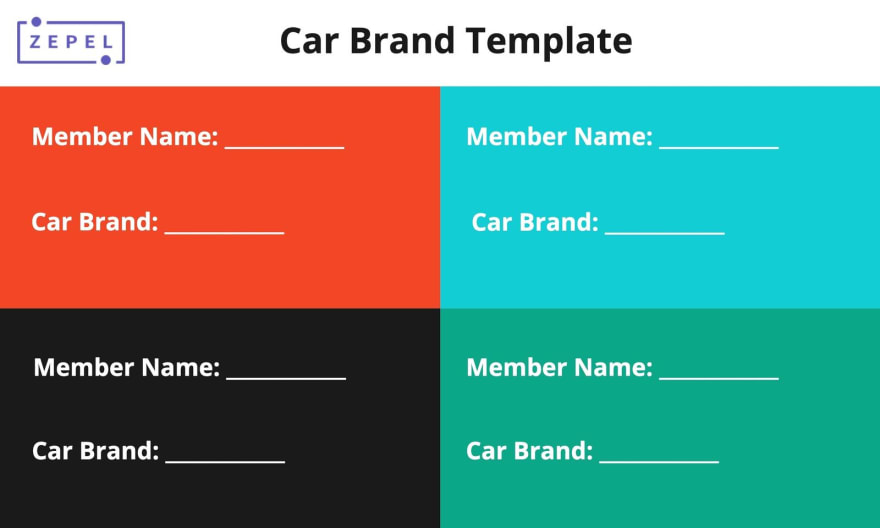
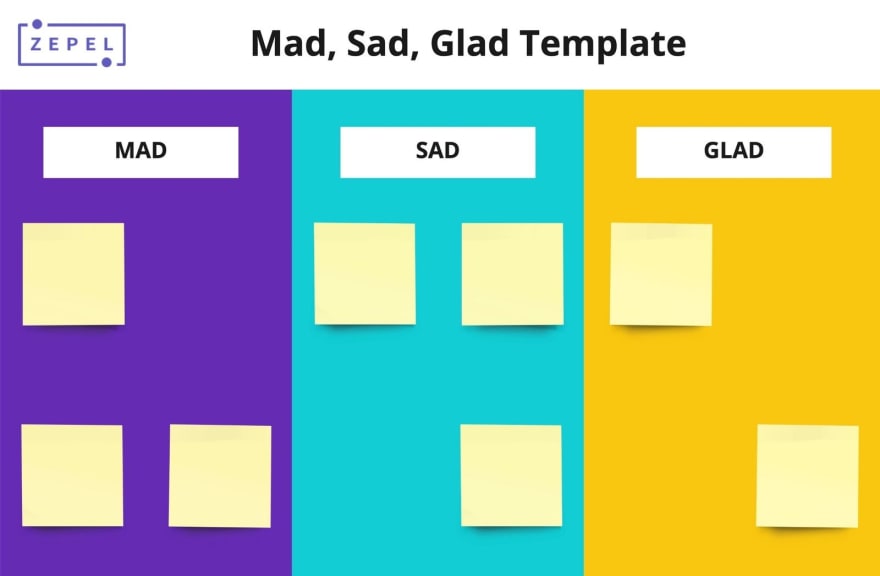
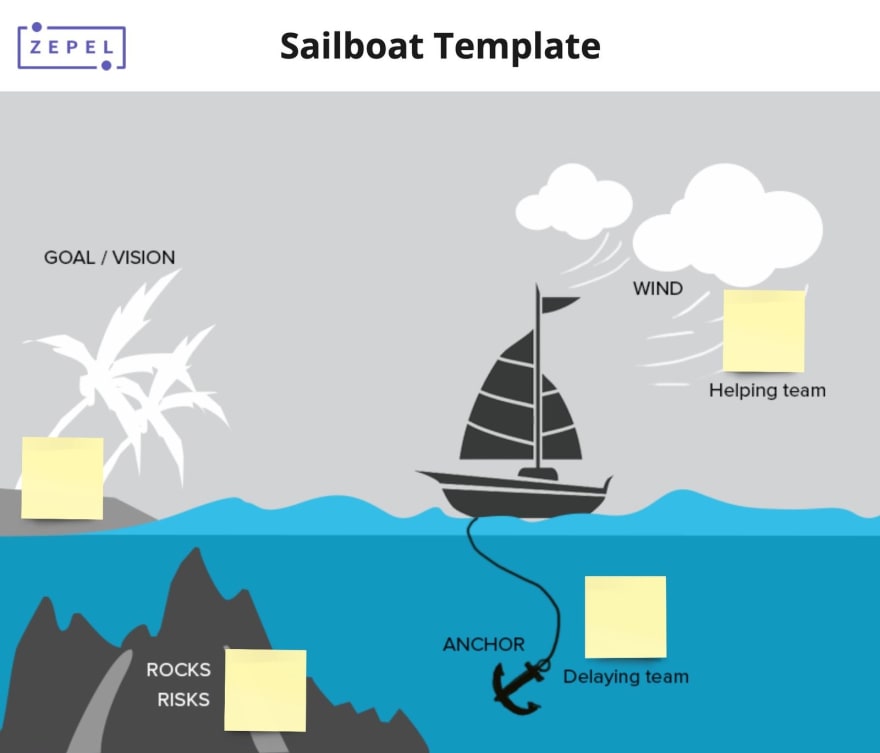
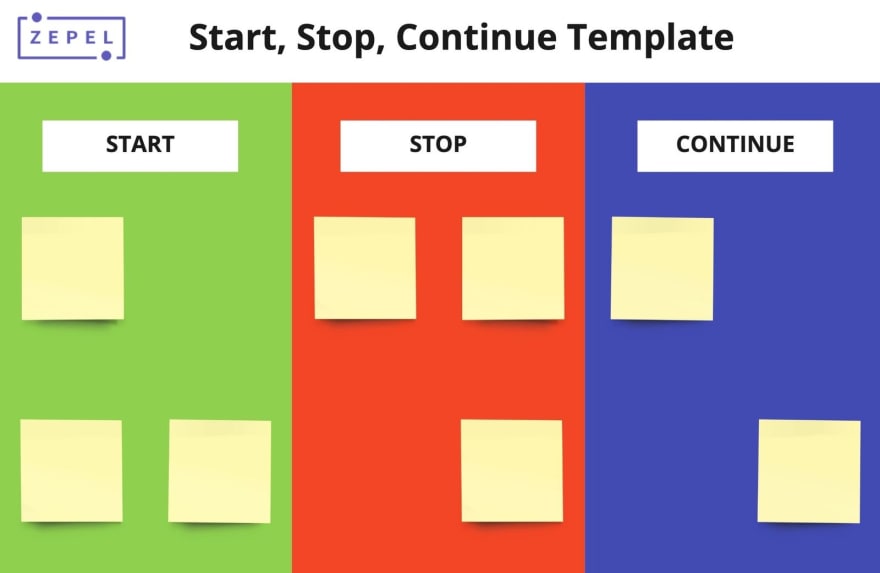

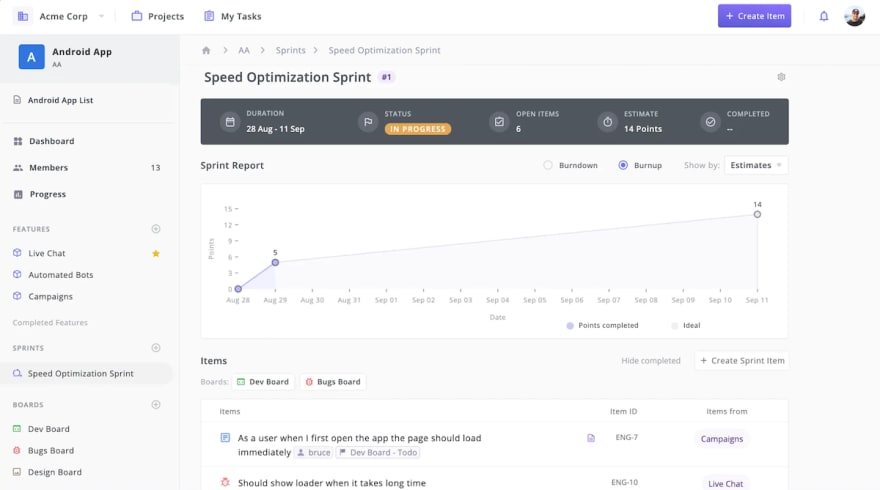

Latest comments (0)